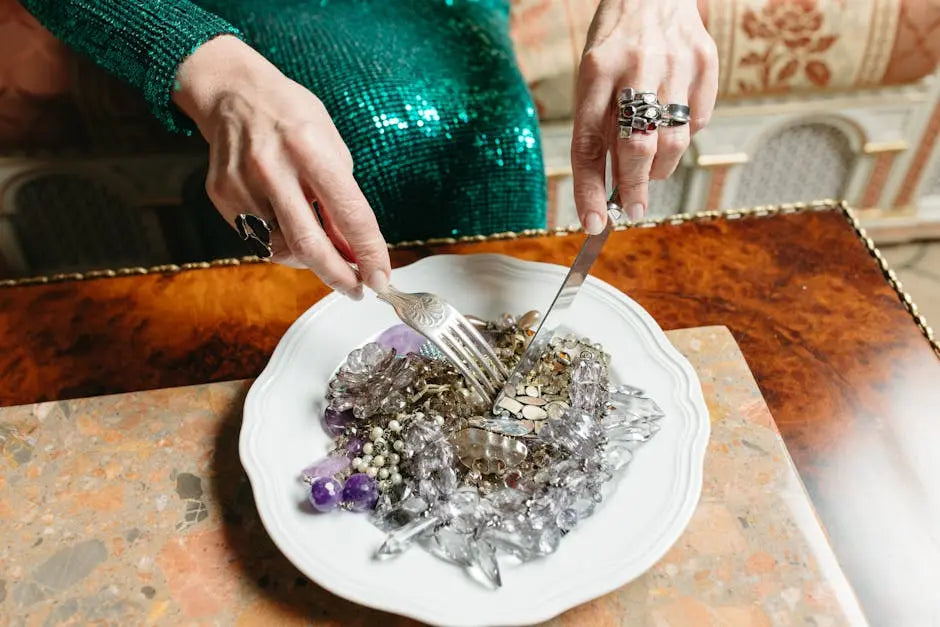
How Are Synthetic Diamonds Different from Natural Diamonds?
Diamonds have an eternal charm, whether they’re sparkling in an engagement ring or adorning a necklace. But did you know there are two main types? In this FAQ, we’ll dive into the key differences between synthetic diamonds and natural diamonds, making it easy to understand what sets them apart.
Image curtesy of Diamond Veneer Travel Jewelry
Understanding Diamond Origins
Natural diamonds are formed deep within the Earth’s mantle, over millions of years, under intense heat and pressure. This process gives them a unique character that has captivated people for centuries.
On the other hand, synthetic diamonds are created in laboratories using two methods: High Pressure High Temperature (HPHT) and Chemical Vapor Deposition (CVD). These processes can mimic the natural conditions under which diamonds form.
The result? Both types of diamonds are chemically and physically the same. However, the fascinating stories behind their formations differ tremendously, influencing how people perceive their value.
So when you choose, remember: one comes from the heart of the Earth, while the other is a marvel of human ingenuity.
Comparing Physical Properties
At first glance, synthetic and natural diamonds can be nearly indistinguishable. Both boast a brilliant shine, exceptional hardness, and intricate crystal structures.
However, certain characteristics can reveal their origins. Natural diamonds may contain unique inclusions formed over time, whereas synthetic diamonds are often ‘flawless’ due to their controlled creation process.
Moreover, lab-created diamonds sometimes show different patterns in their growth structure when examined under a microscope. These subtle differences can intrigue gemologists.
Yet, for most of us, the visual appeal and sparkle of either diamond type can sweep us off our feet. It’s the beauty that counts, right?
Evaluating Cost Differences
One of the most significant differences between synthetic and natural diamonds is cost. Generally, synthetic diamonds are more affordable, often costing 30-40% less than their natural counterparts.
Why is this the case? The production process for synthetic diamonds is less labor-intensive than mining natural diamonds, which requires extensive resources and labor over long periods.
Additionally, the popularity of synthetic diamonds has increased, further driving down prices. This accessibility allows more individuals to invest in diamond jewelry without breaking the bank.
However, the lower price doesn’t diminish their beauty or quality, making synthetic diamonds an attractive choice for many consumers.
Assessing Environmental Impact
The environmental concerns surrounding diamond mining cannot be overlooked. Natural diamond extraction often leads to ecosystem disruption, deforestation, and carbon emissions.
On the contrary, synthetic diamonds offer an ecologically friendly alternative. Their creation requires significantly less land and typically generates lower carbon emissions. This makes them a potential choice for environmentally-conscious consumers.
By selecting synthetic over mined diamonds, consumers can enjoy the beauty of diamonds while promoting sustainable practices. It’s a choice that benefits both the buyer and the planet.
Understanding Impacts on Value
When it comes to value, perceptions differ widely between synthetic and natural diamonds. Natural diamonds are often seen as more prestigious, carrying a higher resale value mainly due to their rarity.
Conversely, synthetic diamonds tend to depreciate more quickly in the market. Since they are manufactured in controlled environments, the supply can meet demand more easily, leading to a fluctuating value.
Despite this, many people recognize the emotional and aesthetic value of both types, regardless of market trends. Ultimately, the choice may rest more on personal preference than monetary worth.
Final Thoughts on Diamonds
In summary, synthetic diamonds and natural diamonds share many similarities, but their origins and some key characteristics distinguish them. Whether you choose a synthetic or natural diamond, both offer beauty and brilliance.

